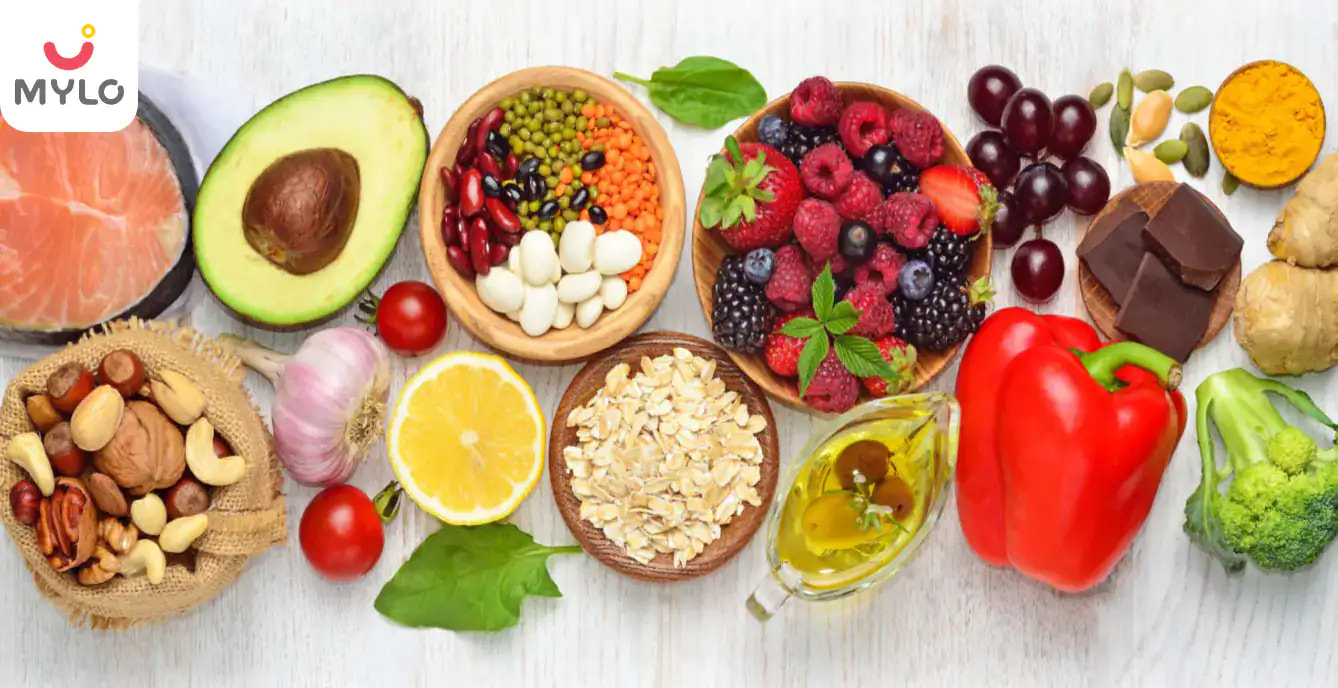
VIEW PRODUCTS
Article Continues below advertisement
- Home

- Diet & Nutrition

- 6-Month-Old Baby's Food Chart: Quantity and Routine
In this Article
Diet & Nutrition
6-Month-Old Baby's Food Chart: Quantity and Routine
Updated on 2 November 2022
Article Continues below advertisement
During the initial months of a newborn, breastfeeding is the way to fulfill all the nutritional requirements. After your little one turns 6 months old, you can decide on which foods to introduce. Prefer homemade items over readymade items available in the market to ensure health and safety.
Let’s look at the food items which can be included when you plan to start your baby on solids.
List of food items to include in baby's diet
1) Fruits
-
Banana
-
Apple
-
Avocado
Article continues below advertisment
-
Plums
-
Peaches
-
Prunes
2) Vegetables
-
Pumpkin
-
Sweet Potato
Article continues below advertisment
-
Carrot
3) Cereals & Grains
-
Ragi
-
Rice
-
Barley
-
Semolina/ Rava
Article continues below advertisment
-
Sabudhana
-
Amaranth
-
Phool Makhana
-
Quinoa
4) Pulses
-
Yellow moong dal
Article continues below advertisment
How much serving per day is ideal?
The quantity of food depends on your baby’s appetite. Start with a tablespoon of fruits or vegetables and gradually increase the amount.
When giving a piece of fruit or vegetable, keep in mind that it’s finely chopped or minced to avoid any choking hazards.
Introducing solids
-
Properly cleanse the spoons and bowls to be used for feeding the baby to make it safe for eating.
-
When starting solids, never introduce more than one food at a time.
-
Steer clear of any sugar or salt until the age of 1.
Article continues below advertisment
-
Check for an allergy symptom in case of introducing a new food item. Stop and consult your doctor in case you find any symptoms of rash or irritability in your child.
-
Ensure that the food is cooked properly.
-
Taste the food, odds are if you don’t like the food, your baby won’t either.
-
In the initial stage of introducing solids, try to keep it runny as your baby is accustomed to swallowing. As your baby works up on eating skills from the spoon, you can offer a thicker consistency.
-
Breastfeeding is still the way to go, as most of the nutrients will come from it. So, don’t taper back on it yet.
Article continues below advertisment



Written by
Charu Pratap
Charu has been a seasoned corporate professional with over a decade of experience in Human Resource Management. She has managed the HR function for start-ups as well as established companies. But aside from her corporate career she was always fond of doing things with a creative streak. She enjoys gardening and writing and is an experienced content expert and linguist. Her own experiences with motherhood and raising a baby made her realize the importance of reliable and fact-based parenting information. She was engaged in creating content for publishing houses, research scholars, corporates as well as for her own blog.
Read MoreGet baby's diet chart, and growth tips

Related Articles
RECENTLY PUBLISHED ARTICLES
our most recent articles

Scans & Tests
What are the Implications of Non Stress Test for Your Baby?

Scans & Tests
Screening for Down Syndrome in Babies

Labour & Delivery
What Are the Causes and Different Stages of Prolonged Labor (Delayed Birth)?

Fun & Humour
Top 10 Action Series on Netflix

Getting Pregnant
15 Best Underrated Movies on Netflix

TV & OTT
Top 10 Most Trending Movies on Netflix
- 10 Best Crime Series on Netflix
- 10 Most Popular Series on Netflix
- 5 Most Popular International Movies on Netflix
- Top 10 Movies On Hotstar Premium
- The Top 10 Action Series Available on Hotstar
- Top 10 Short Moral Stories For Kids In English
- Top 10 Movies on Hotstar in Hindi
- How Safe Is It to Use Stand and Pee Device While Urinating?
- Children with White hair? What are the causes?
- Most Trending Human Web Series on Hotstar
- How Many Times Can You Use the Same Paper Toilet Seat Cover?
- Best Amazon Prime series in Hindi
- Best Horror Movies to Watch on Amazon Prime
- What to do if toddler hates bathtime?

At Mylo, we help young parents raise happy and healthy families with our innovative new-age solutions:
- Mylo Care: Effective and science-backed personal care and wellness solutions for a joyful you.
- Mylo Baby: Science-backed, gentle and effective personal care & hygiene range for your little one.
- Mylo Community: Trusted and empathetic community of 10mn+ parents and experts.
Product Categories
baby carrier | baby soap | baby wipes | stretch marks cream | baby cream | baby shampoo | baby massage oil | baby hair oil | stretch marks oil | baby body wash | baby powder | baby lotion |



